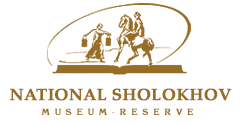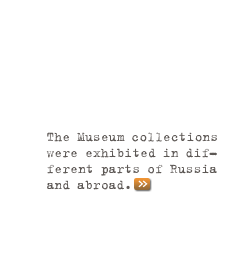Museum Collection
A Caucasian Sword
A Caucasian sword (shashka), one of the samples of domestic arms art of the last third of the XIX century, which the Don Cossacks often used, is kept in the collection of the National M.A. Sholokhov Museum-Reserve.
A Caucasian sword (shashka) is a slashing and thrusting long-bladed cold weapon. The Russian officer F.F.Tarnau, who fought in the Caucasus in the 30-s of the XIX century, recalled: “…the most terrible weapon consists of a saber strip in the wooden Morocco leather-covered scabbard with a handle having no protection for the hand. It is called “sazhenshhua” meaning “a big knife”, which gave the name for the sword …”
The first types of the swords (shashkas) are known to appear in the XII–XIII centuries. When the fire arms prevailed, the sword supplanted the sabre first in the Caucasus, then in Russia, with itself undergone significant changes: it became more massive and acquired a bend.
Having been borrowed initially from the Caucasian people by the Terek, Kuban and then Don Cossacks, in the XIX century, the sword was adopted by the Russian army as an authorized type of knives for almost all the cavalry units (sabre was left only for Hussars Guards), for the officers of all combat arms and for gendarmerie and police.
In the cavalry, the sword remained in that capacity until the mid-twentieth century becoming the last in the history of cold arms to have a massive combat use (by the Red Army cavalry in the Great Patriotic war).
The historical memory marks the sword firstly as a Cossack arms and up to date it still remains an integral part of the traditional culture of the Russian Cossacks.
Eduard Khurumov










